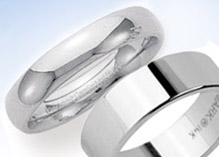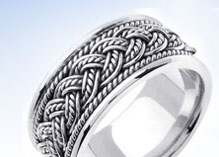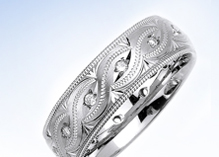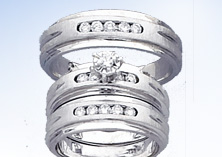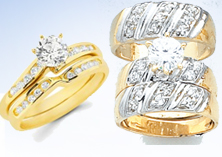There are no products listed under this category.

Wedding Bands
Wedding Bands
Your wedding day will be one of the most memorable occasions you will ever experience and every detail should be perfect. The wedding bands you choose are something you will treasure on your special day and for the rest of your life. Browse our stunning collection of the finest gold and sterling silver wedding bands at Sarraf.com. Our exquisite selections also include diamond wedding bands, rose gold wedding bands and beautifully crafted handmade wedding bands. The quality and diversity we offer in this superb wedding band collection is something you will appreciate as you select the perfect wedding band to symbolize your union and everlasting love for each other.
More about Wedding Bands
Wedding bands are the most well-known of all wedding traditions, dating back to early Europe. In early European customs, the wedding ring was part of the exchange of gifts between families. During this time, marriage was something strictly arranged by families and not an individual agreement between a man and woman. Although wedding bands received mention in Eastern Orthodox, Catholic, and Jewish wedding ceremonies, it wasn’t until the 20th century that it became customary for both a wife and husband to wear wedding bands. Since the 1930s in North America, the custom of proposing to a woman with a diamond engagement ring has become traditional. It has also become customary for the best man and maid of honor, or ring bearer, to keep the wedding rings until they are called for in the ceremony.
Shop for Wedding Bands at Sarraf.com
Sarraf.com has vast experience and knowledge in wedding bands, and we offer our customers the highest quality jewelry at a substantial discount. We offer a large selection of wedding bands that will captivate even the most discriminating buyer. You can select from 14k gold, 18k gold, white gold, yellow gold, rose gold, diamond, sterling silver, and white and yellow gold handmade wedding bands. We offer many different widths and sizes, from 2mm up to 10mm in width and from size 4 up to 14. Most wedding band orders will ship within 24 hours of you placing the order.



